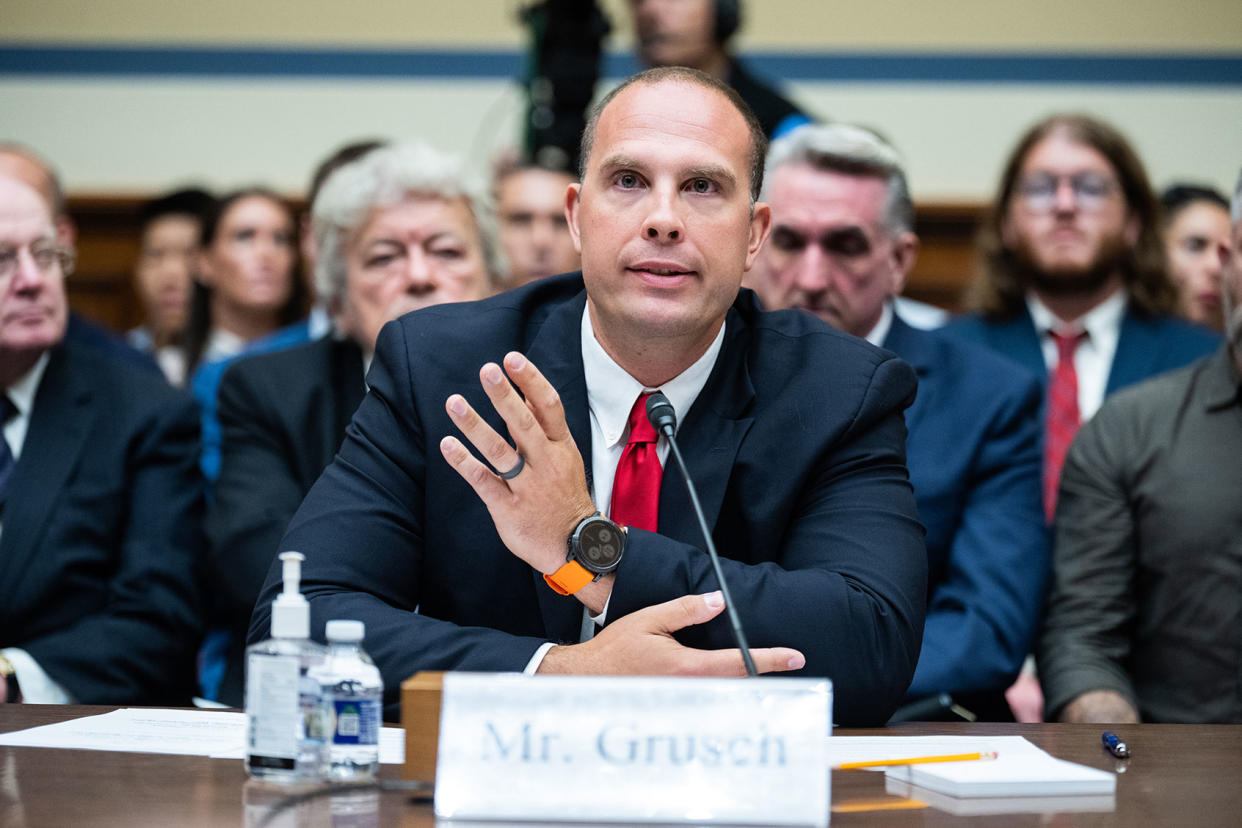2023 marked historic progress for UFO science, though no smoking gun for aliens exists yet

Before the start of the 2020s, almost anyone who admitted to a belief in UFOs (unidentified flying objects) or extraterrestrial visitors was dismissed as a crackpot. Yet since the start of the decade, the Pentagon has repeatedly and openly acknowledged that their own pilots have spotted and recorded images of UFOs (more specifically known as UAPs, or unidentified anomalous phenomena). The so-called Pentagon UFO videos — the initial clips of which were released to the public in 2020 — showed UAPs recorded in 2004, 2014, 2015 and 2019. Ever since, respected government officials and scientists have joined ordinary UFO enthusiasts in insisting that the proverbial truth must be out there.
But 2023 was arguably one the most important years for UAP developments, at least in terms of disclosures that didn't produce a smoking gun or things that were debunked. Here's a look back at what we learned.
01 NASA's first meeting confirming existence of UAPs
In June 2022, NASA announced the formation of an independent study group to weigh the evidence of UAPs and whether they indicate something more than strange weather phenomena or secretive military crafts. The 16-person group included experts from the aerospace aviation industry and academia, as well as former astronaut Scott Kelly. The panel disappointed many by concluding above all else that there is a need for more "high quality data," but even having NASA acknowledge the existence of UAPs was a major historic achievement. "We steer between the rocks and the cyclone," panel chairman David Spergel, a widely respected cosmologist, said in a statement at the time. "We have a community of people who are completely convinced of the existence of UFOs. And we have a community of people who think addressing this question is ridiculous, everything can be explained."
02 The impressive UFO hearing by the US Congress
A trio of military officials met with a House Oversight subcommittee in July to discuss UAPs. It was a fruitful meeting, one that yielded a number of important revelations. One former intelligence official, David Grusch, claimed that so-called "nonhuman biologics" have been discovered from a crashed UAP. He also claimed to the assembled legislators that the Pentagon runs a progress to reassemble crashed UAPs by misappropriating funds and operating "above congressional oversight." Then there was former Navy pilot Ryan Graves, who testified that both military and commercial pilots fear stigma and even professional repercussions when they report UAP encounters. Finally a former Navy commander, David Fravor, testified that in 2004 he and three of his fellow military pilots saw a white Tic-Tac shaped hovering between the Pacific Ocean and their jets, which vanished and immediately reappeared 60 miles away. "The technology that we faced is far superior to anything that we had," Fravor said. "And there’s nothing we can do about it, nothing."
03 The less impressive UFO hearing held by the Mexican parliament
Not all of the UFO-related news in 2023 was promising. Just take the so-called "alien mummies" presented in Mexico, allegedly discovered by journalist and ufologist José Jaime Maussan Flota. The supposed extraterrestrials were revealed to the Mexican Congress in September. Maussan has twice before claimed to have found alien mummies, only to later be debunked, but despite this track record, Maussan was invited to present his findings to Mexican government officials. Once there, he said he had discovered the pair of mummified aliens in a diatom mine in Cusco, Peru. Experts were unimpressed — including Graves, who was also invited to attend this conference. Graves later said that "yesterday's demonstration was a huge step backwards for this issue," adding that he was "deeply disappointed by this unsubstantiated stunt."
Want more health and science stories in your inbox? Subscribe to Salon's weekly newsletter Lab Notes.
04 The US admits it receives dozens of UFO reports every month
When the Department of Defense's All-domain Anomaly Resolution Office (or AARO) in 2022, the new government agency's explicit goal was to investigate all UAP incidents. As the Pentagon disclosed when releasing its annual report in October, AARO has certainly been kept quite busy: The organization had received roughly 800 reports of UAP over the preceding six months, a major jump from the previous year. Although then-director Sean Kirkpatrick, a physicist, acknowledged that about half of these contain sufficient data that they can be ruled out as "mundane things," there is a small fraction — 2% to 4% — that require further investigation. "There are ways to hide in our noise that always concern me ... It could just be a foreign entity. It could be a hobbyist. It could be anybody ... And those are the things that we have to look into," Kirkpatrick explained to CNN at the time.
05 The supposedly alien beads that weren't
In 2014, an object from outer space named CNEOS 2014-01-08 crashed into Earth at over 100,000 mph before exploding into fragments that landed in the South Pacific Ocean. A UFO by definition, CNEOS 2014-01-08 piqued the interest of the scientific community, with Harvard astronomy professor Dr. Avi Loeb suggesting in 2022 that it could be extraterrestrial technology. After leading an expedition to the seafloor in 2023 to retrieve CNEOS 2014-01-08, Loeb came back with "spherules" that he speculated were of "likely extrasolar composition." For a moment, it seemed as if the promise of CNEOS 2014-01-08 would be fulfilled — but then other experts came back with a very different conclusion. "Contents of nickel, beryllium, lanthanum and uranium are examined in the context of a known anthropogenic source of contamination, and found to be consistent with coal ash as suggested from a publicly available coal chemical composition database (COALQUAL)," wrote the authors of a paper in the journal Research Notes of the American Astronomical Society. In other words, as the study put it: "The meteoritic origin is disfavored."

